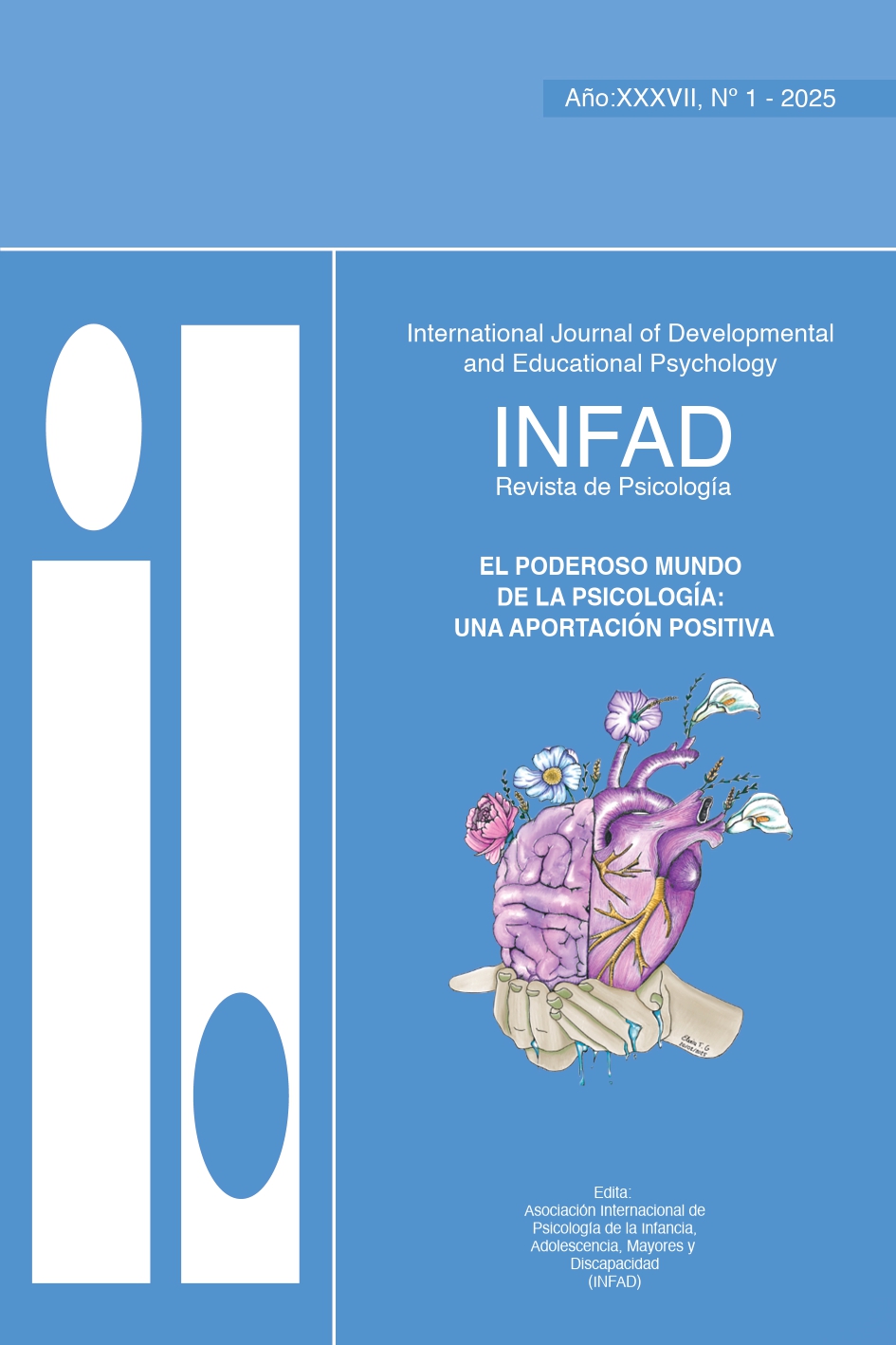Implication of communication and family cohesion in the explanation of problematic use of social networks in adolescence
Main Article Content
Abstract
Problematic use of social media (PUSM) among adolescents has become an increasing concern due to its impact on emotional well-being, mental health, and family dynamics. Within this context, family climate—defined by cohesion, expressiveness, and conflict—is considered a key factor in regulating digital behavior. This study, from an ecological perspective, analyzes the relationship between these family dimensions and PUSM, aiming to identify patterns that can guide future preventive strategies. The study was conducted with a sample of 1,164 Spanish adolescents aged 12 to 18. From this population, a subsample of 298 students was selected based on extreme scores in family climate dimensions. The Family Environment Scale (Moos et al., 1974) and the Problematic Social Media Use Questionnaire (Delgado & Martínez-Monteagudo, 2023) were used. Data were analyzed using Spearman correlations and mean comparisons through Student’s t-test. Results showed that family cohesion and expressiveness correlated negatively with PUSM, while family conflict correlated positively. Adolescents with low PUSM reported higher levels of emotional support and open communication, whereas those with high PUSM reported more family conflict and emotional disconnection. The findings reinforce the value of a positive family climate as a protective factor against PUSM and highlight the need to promote healthy family environments. The development of preventive programs that actively involve families is recommended. Future research should explore interactions between the family context and other social and school environments and incorporate mixed methods to gain a deeper understanding of the phenomenon.
Article Details
Section

This work is licensed under a Creative Commons Attribution-NonCommercial-NoDerivatives 4.0 International License.
Attribution — You must give appropriate credit, provide a link to the license, and indicate if changes were made. You may do so in any reasonable manner, but not in any way that suggests the licensor endorses you or your use.
NonCommercial — You may not use the material for commercial purposes.
NoDerivatives — If you remix, transform, or build upon the material, you may not distribute the modified material.

This work is licensed under a Creative Commons Attribution-NonCommercial-NoDerivatives 4.0 International License
How to Cite
References
Bronfenbrenner, U. (1987). La ecología del desarrollo humano . Ed. Paidós.
Khodarahimi, S., Fathi, S., & Shokrkon, H. (2023). Family environment and problematic social media use: The mediating role of emotional intelligence. Current Psychology . https://doi.org/10.1007/s12144-023-04834-5
Marino, C., Gini, G., Vieno, A., & Spada, M. M. (2018). The associations between problematic Facebook use, psychological distress and well-being among adolescents and young adults: A systematic review and meta-analysis. Journal of Affective Disorders, 226 , 274–281. https://doi.org/10.1016/j.jad.2017.10.007
Moos, R. H., Insel, P. M., & Humphrey, B. (1974). Preliminary manual for Family Environment Scale, Work Environment Scale, Group Environment Scale . Palo Alto, CA: Consulting Psychologists Press.
Montag, C., Demetrovics, Z., Elhai, J. D., Grant, D., Koning, I., Rumpf, H. J., Spada, M. M., Throuvala, M., & van den Eijnden, R. (2024). Problematic social media use in childhood and adolescence. Addictive Behaviors, 153 , 107980. https://doi.org/10.1016/j.addbeh.2024.107980
Orben, A., Dienlin, T., & Przybylski, A. K. (2020). Social media’s enduring effect on adolescent life satisfaction. PNAS, 116 (21), 10226–10228. https://doi.org/10.1073/pnas.1902058116
Twenge, J. M., Martin, G. N., & Campbell, W. K. (2018). Decreases in psychological well-being among American adolescents after 2012 and links to screen time during the rise of smartphone technology. Emotion, 18 (6), 765–770. https://doi.org/10.1037/emo0000403
Vannucci, A., & Ohannessian, C. M. (2019). Social media use subgroups differentially predict psychosocial well-being during early adolescence. Journal of Youth and Adolescence, 48 (8), 1469–1493. https://doi.org/10.1007/s10964-019-01060-9
Wartberg, L., Kriston, L., & Thomasius, R. (2019). Internet gaming disorder and problematic social media use in a representative sample of German adolescents: Prevalence estimates, comorbid depressive symptoms, and related psychosocial aspects. Computers in Human Behavior, 103 , 31–36. https://doi.org/10.1016/j.chb.2019.09.014

